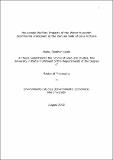| dc.description.abstract | Lake Victoria is an important source of livelihood for not only Kenyans residing next to it but the rest of East Africa and The Great Nile Valley. Nevertheless, Lake Victoria and therefore the livelihood of fishermen residing next to it has been adversely affected by the water hyacinth (Eichhornia crassipes) as reported in many fora. It becomes imperative therefore that the effects of the hyacinth if any are investigated and monitored in order to forestall and adverse impacts. The first step in such a process will needless to say require an inquiry of whether impacts on household welfare negative or otherwise exist. A study was therefore undertaken aimed at answering the questions: Is the water hyacinth deleterious to household welfare? Is this impact greater for poorer sections of society? After clarifying what is meant by household welfare, an analytical framework is presented and applied to household cross sectional data from five sub-locations adjacent to the Kenyan waters of Lake Victoria. A randomly selected sample of 350 households was interviewed using a questionnaire similar in design to the World Bank‘s LSMS format. The instrument has the advantage of enabling a comprehensive assessment of many aspects of welfare rather than giving precise numerical values since many day-to-day policy decisions are made with the former, giving a general background of the field on which the policy play. A set of households resident in areas clear of the hyacinth was set out as a control group in this study. Majority of households reported that the hyacinth had deleterious welfare effects and OLS results strongly confirmed this result. Household expenditure (a proxy for income) was consistently larger in non infested areas in the estimated Engel relationship, ‗income‘ coefficients were negative as expected, indicating an inverse relationship between the share of food in household budget and income. Household capital coefficients —human, physical and social all had the expected signs In addition to these main results, constructed hypothetical markets for hyacinth control indicated non-zero values of willingness to pay which intuitively means that such households were better off without the hyacinth. These results have fundamental lessons for research and policy. It is evident that the poor have a lot at stake when faced with such a crisis and therefore, the hyacinth control effort should be concentrated in those areas where the poor live. The importance of education which is a manipulable factor both in the short and longterm and can improve the flexibility of households to the changing economic circumstances that accompany hyacinth invasion is noted. Measures that improve incomes would go a long way in mitigating or lessening the adverse welfare impacts of the water hyacinth. | en_US |

